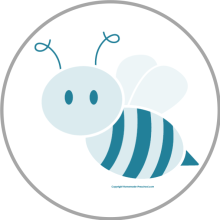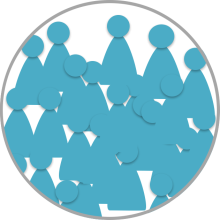
Dr. David’s laboratory studies gut-brain interactions, and aim to unravel how the gut microbiota can impact our behavior, specifically in Autism Spectrum Disorder and Anxiety Disorders. Her team uses a crowd-sourced approach to collect lifestyle information, dietary habits, and microbiome samples. Her laboratory also works on identifying bottlenecks in microbiome data exploration and has been developing new biocomputing methods to improve sequencing data annotation and analysis. Her interest lies in using machine learning algorithms to extract meaningful information from massive datasets already publicly available such as the Human Microbiome Project.

Learning microbiome properties using word-embedding techniques
In this project, we seek to learn a set of properties to describe individual taxa and entire microbial communities more effectively than a list of taxa can. We condense the variable space in the human gut microbiome from thousands of taxa to a latent variable landscape of only hundreds of variables, thereby utilizing community level signatures to increase power and reproducibility in microbiome studies. To do so, we use a system of embeddings that transforms human gut microbiome taxonomic data into a continuous, dense, low-dimensional space. We show for example that embedded gut microbiome data is more informative of the inflammatory bowel disease (IBD) status of the host than normalized taxonomic counts and other dimensionality reduction methods such as Principal Coordinate ordination. You can find our first paper in Plos Computational Biology here.

The M3 project: Microbiome, Metabolites and the Mind: a longitudinal analysis of the microbiota of children with autism
The existence of a link between the gut microbiome and Autism Spectrum Disorder (ASD) is well established in mice, but in human populations efforts to identify microbial biomarkers remain limited due to a lack of appropriately matched controls, stratification of participants within the spectrum, and sample size. To overcome these limitations, we crowdsourced the recruitment of over 100 families with age-matched sibling pairs between 2-7 years old, where one child had a diagnosis of ASD and the other did not. We performed multi-omics analysis and longitudinal data analysis of 16S amplicon data.

Impact of the gut microbiota on behavior phenotypes in rodents
The laboratory has been working on feeding mice specific microbial taxa, which previously were found enriched in individuals in individual with Autism Spectrum Disorder and/or General Anxiety Disorder. Behavior testing has been implemented to evaluate if the microbe being supplemented seems to have an effect on the behavior of the mice. We are also applying a combination of multi-Omics analysis in an attempt to unravel some of the mechanisms underlaying the interactions between the gut microbiota and the brain.

Should we feed probiotics to honey bee? (our beehavior study!)
In collaboration with Dr. Priya Chakrabarti and Dr. Ramesh Sagili’s Honey Bee Lab at OSU, we are testing if nutritional complement (such as probiotics) can offset gut pathogen stressor and/or significantly impact the microbeeal community. We are measuring if the different treatment can affect their floral choice, and therefore alters bee gustatory responses.

Impact of the gut microbiota on General Anxiety Disorder: a crowdsource study
This project aims to understand the role of the microbiome in anxiety. There are already myriad publications connecting gut bacterial taxa with this disorder: Campylobacter jejuni, for example, increases anxiety, while Bifidobacterium longum and Lactobacillus helveticus reduce it. While anxiety mechanisms, especially dysregulation of the hypothalamic–pituitary–adrenal (HPA) axis, have been extensively studied in mice, there is currently a dearth of knowledge of these mechanisms in humans and their association with gut microbiome. The David laboratory is currently developing a crowdsourced study involving undergraduate students from Oregon State University. We will gather phenotypic data including stress level, changes in weight, sleep patterns, and frequency of anxiety attacks, and collect longitudinal microbiome samples during the school year.

Meta-analysis of gut microbiota associated with Anxiety Disorders
Publicly available 16S amplicon datasets, such as the American Gut Project, are enabling meta-analysis of multiple datasets. By carefully combining them, we anticipate to refine the biomarkers involved in anxiety disorder by increasing the power of our analysis while parsing out some of the confounding environmental factors which can also influence the microbial structure of our gastro-intestinal tract.

New Hidden Markov Models for metagenome annotation
HMM have been widely used to assign function from potentially distant homologs. This project aims to first develop new models by calibrating the stability of the clusters and alignments generated rather than removing entire sequences from a SEED alignment, as well broaden the use of HMMs by developing a new GUI interface compatible with multiple interfaces.